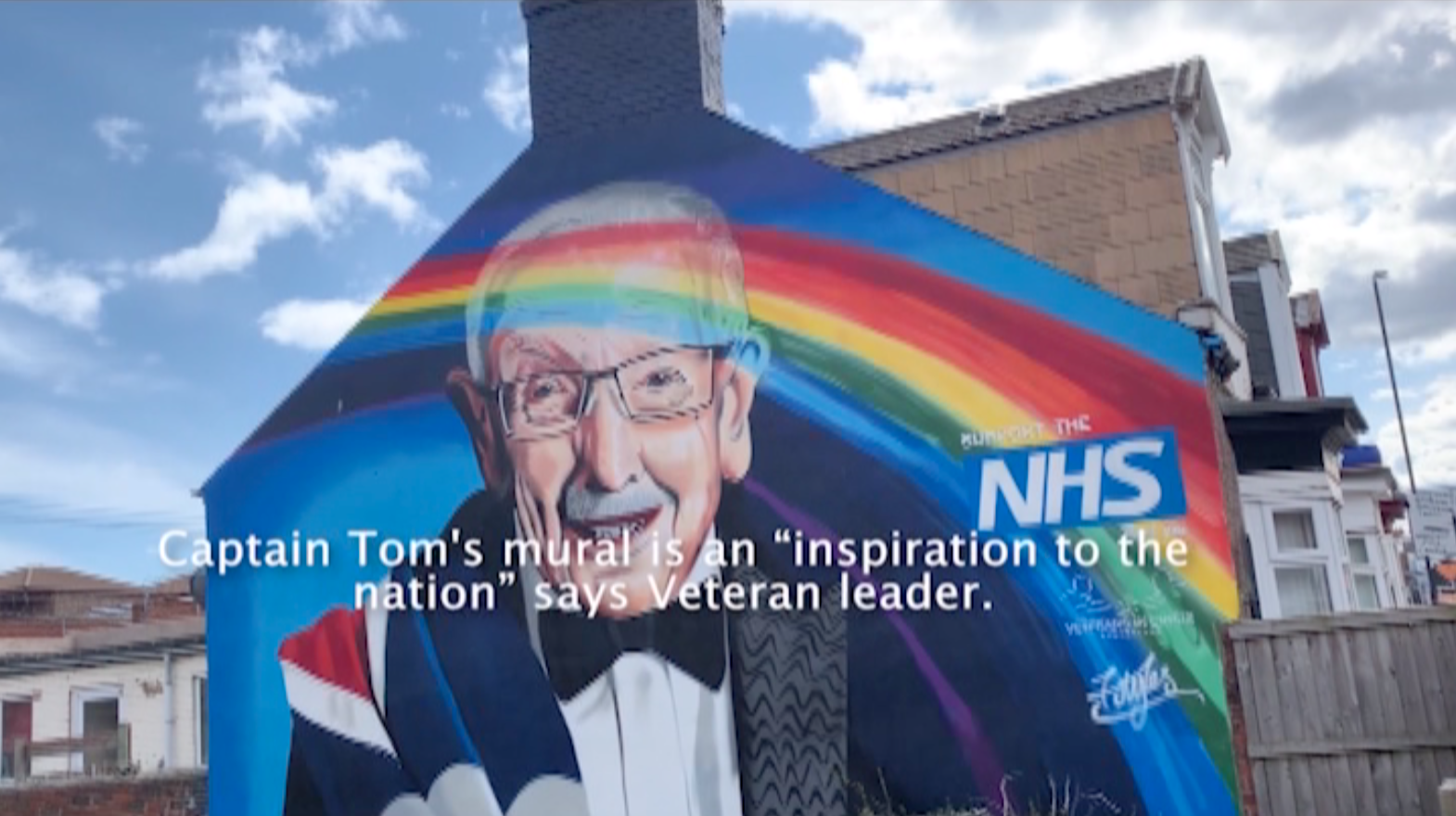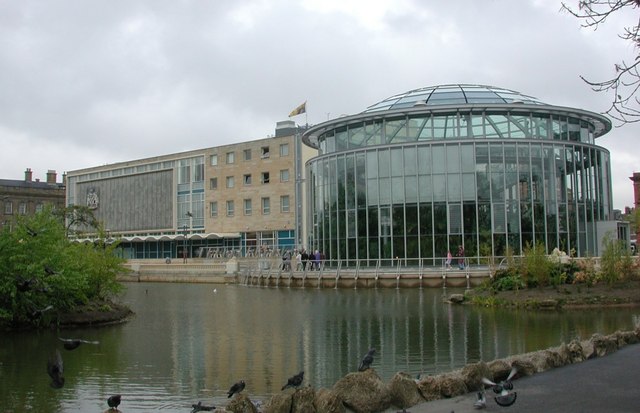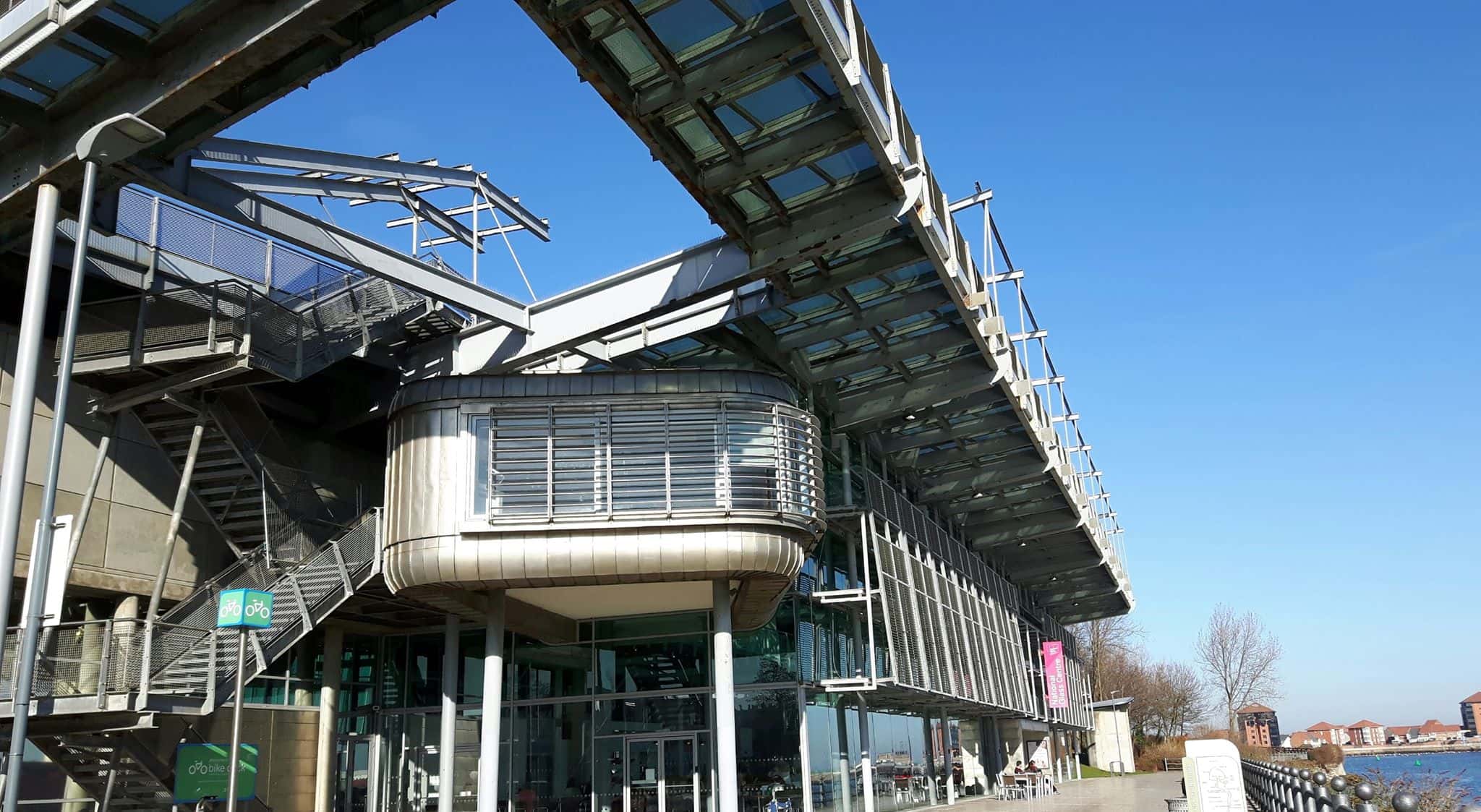Newcastle has a plethora of interesting monuments in it’s city centre, but often we get so used to seeing them that we don’t question the stories behind them.
So it’s time to swot up on the local history and culture with our top 8 monuments you probably never knew the stories behind.
Grey’s Monument, Earl Grey Street
First up we have the well-known Grey’s Monument, or as it’s known by the inhabitants of Newcastle ‘the monument’. Many of you will have correctly deduced that the Earl Grey striding atop the monument is the inventor of the tea company with the same name. But did you know that the unique flavour of the tea was designed to offset the high levels of lime in Northumberland’s water supply at the time. In addition, the earl was also famous for his time as Prime Minister when he enacted the Great Reform Act of 1832.
Another fun fact: Despite the monument being erected in 1838, while he was still alive, Earl Grey did not attend the unveiling ceremony as he wasn’t keen on Newcastle… his loss I guess.
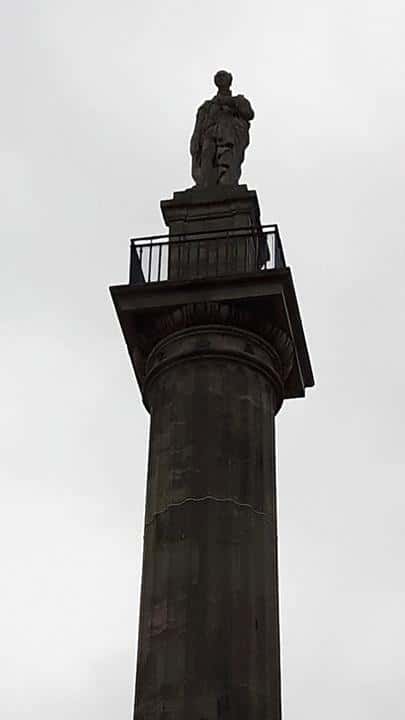
The South Africa War Memorial, Haymarket
Countless passers-by will have gazed at this marvellous monument while on the way to, or out of, the Haymarket bus station. However, few will know it was erected in memorial of three soldiers who died in the Boer War, particularly the famous ‘Fighting 5th Regiment’ of the Northumberland Fusiliers. The oldest of Newcastle city centre’s war memorials, it features a Winged Victory atop it and a woman at its foot carrying a flag next to the words ‘Steadfast in Life Valiant in Death’.
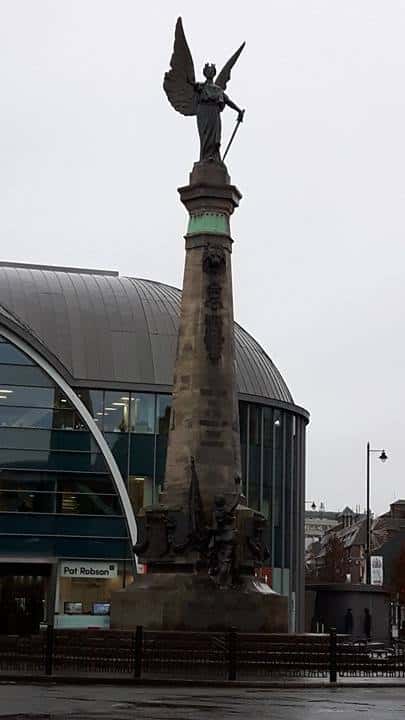
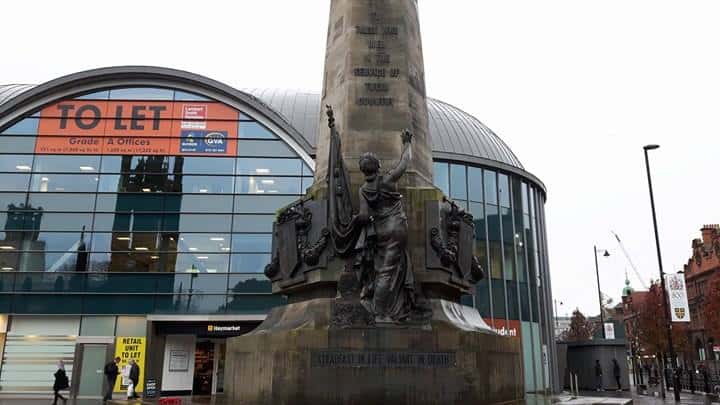
Burt Hall, Northumberland Street
Built in 1885 by the Northumberland Miners, this monument was erected to commemorate Thomas Burt who was the first miner to become an MP.
Born in Backworth, Thomas Burt worked in the mines from an early age and worked his way up through the Northumberland Miners Union and held the position of general secretary for 48 years. He was MP for Morpeth from 1874 to 1918 and also held titles such as the secretary of the board of trade and the ‘Father of the House of Commons’. The statue atop Burt hall is inspired by the famous painting titled ‘Going Home’ by Ralph Hedley and depicts a young miner standing on a mound of coal holding a pick axe and a safety lamp.
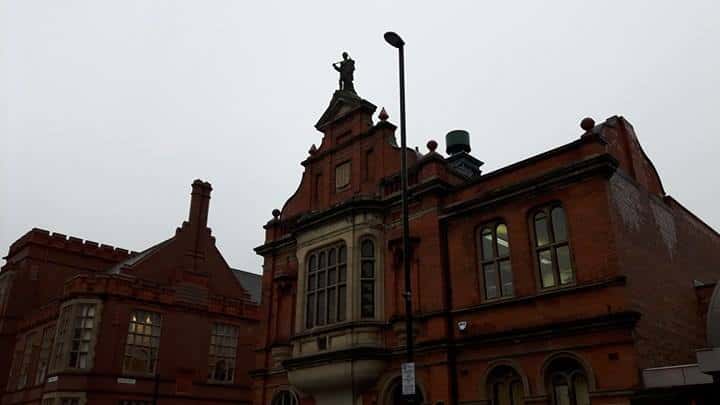
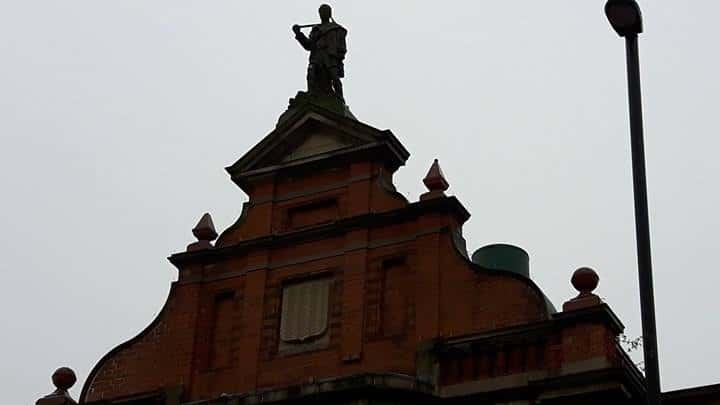
Northumberland ‘worthies’, Northumberland Street
Depicting four famous figures, these sculptures often go unnoticed on the busy trek through Northumberland Street. Overseeing what was once part of the main road to Scotland before the 1970s, and thus one of the busiest streets in the country, these figures have witnessed many years of change and development happening around them.
The top-left statue is that of Thomas Bewick, a famous woodcarver, wildlife engraver and natural history author who lived and worked in Newcastle during his lifetime.
To his right boldly stands Sir Harry Hotspur famous for both featuring in William Shakespeare’s ‘Henry IV, Part 1’ and also having a Premier Football team named after him, however these are not his only claims to fame.
Son to the notoriously hot-headed but brave Duke of Northumberland, Sir Henry Percy, Harry aided in the defence of Newcastle when the Scots invaded and he accepted a challenge from the Earl of Douglas to single combat, which he is said to have lost…
The bottom-left figure is that of Sir John Marley, a former mayor of Newcastle. He was famously the mayor during the time which spanned the ‘Great Siege of Newcastle’ in 1644 during the Civil War. At the time, Newcastle backed the Royalists and thus found itself under attack by the Scottish Army for seven months.
Sir John Marley is perhaps most notorious for his refusal to surrender during the siege and filling St Nicholas’s tower with Scottish prisoners to stop it being destroyed by his enemies.
The bottom-right statue depicts Roger Thornton, often referred to as the Dick Whittington of Newcastle. Legend has it that this man would go from having nothing but the shirt on his back, to being the richest man in the whole of Newcastle. Starting his life in the city as a merchant, Roger would go on to become the mayor of Newcastle in the 1400s and founded a hospital for the poor men and women of his city.
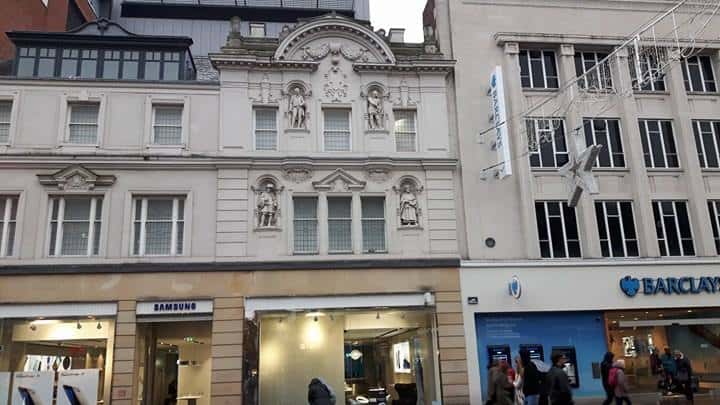
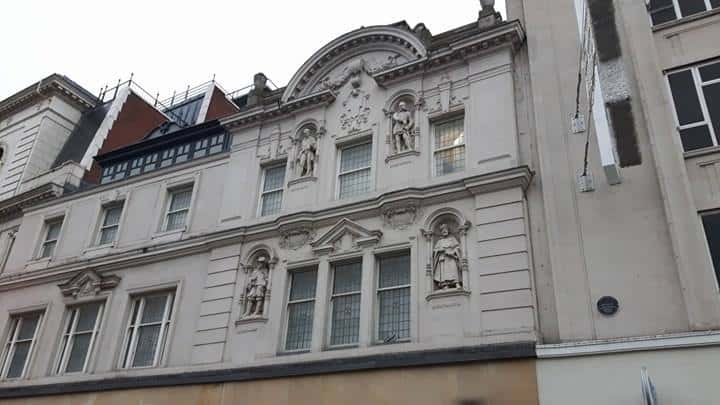
The Response 1914 Memorial, Barras Bridge
This emotive sculpture is considered one of the best war memorials in the country and was awarded a Grade I listing in 2014 on the eve of Armistice day, an honour shared by only 2.5% of listed buildings and monuments.
Situated just next to the Church of St Thomas the Martyr, this narrative statue tells the different stories of individuals who were called to arms in the First World War. Beginning with a personification of enthusiasm, the sculpture works its way through the varying emotions brought up by the war and eventually ends in regret. The piece was unveiled in October 1915 and depicts the ‘Fighting 5th Regiment’, who marched through the place where it currently stands on their way to Central Station where they boarded trains and headed off to France and Belgium.
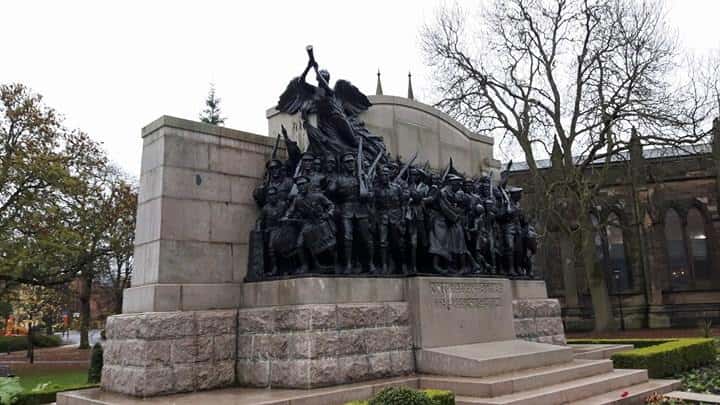
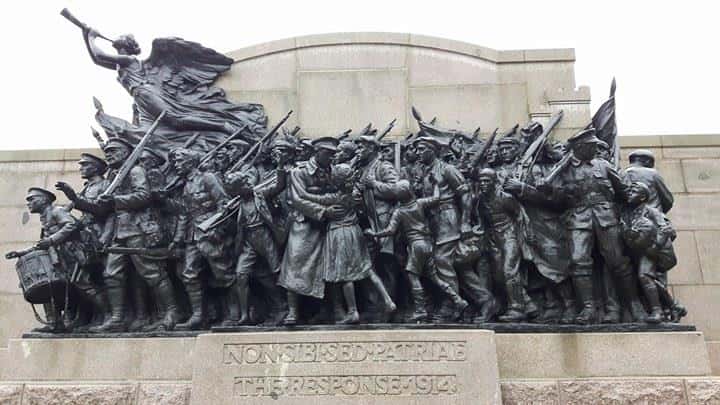
Lord Armstrong Statue, Claremont Street
The statue of Lord Armstrong stands proudly outside the Great North Museum, formerly the Hancock Museum, which he helped to finance during its creation. Known for being a great industrialist, Armstrong is responsible for several technological strides such as his experimentation with water power which lead to the invention of the hydraulic crane. Later his genius would be given to a somewhat different trade and he improved and invented weapons such as a breach loading gun which would ‘change the face of war’. Arguably his most noticeable achievement however, is the funding and designing of the Swing Bridge which still stands today.
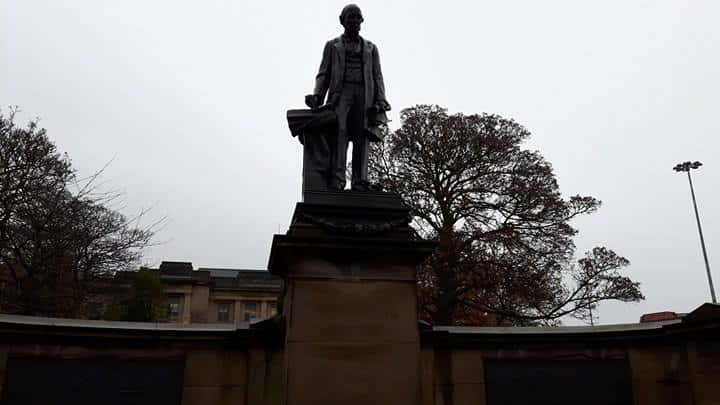
Man With Potential Selves, Grainger Street
These three statues were installed in 2003 by the artist Sean Henry and are collectively known as ‘Man With Potential Selves’. Meant to portray three aspects the same man, the piece can be interpreted in many ways. There is the ‘Standing Man’ who is standing still on a plinth and is said to personify a man with his feet firmly and figuratively on the ground while another, the ‘Walking Man’, is in motion and following a prescribed path through his life. The third and final statue known as ‘Floating Man’ is the most conspicuous however and shows a man resting impossibly on his elbow, likely displaying the other potential self as something of a dreamer.
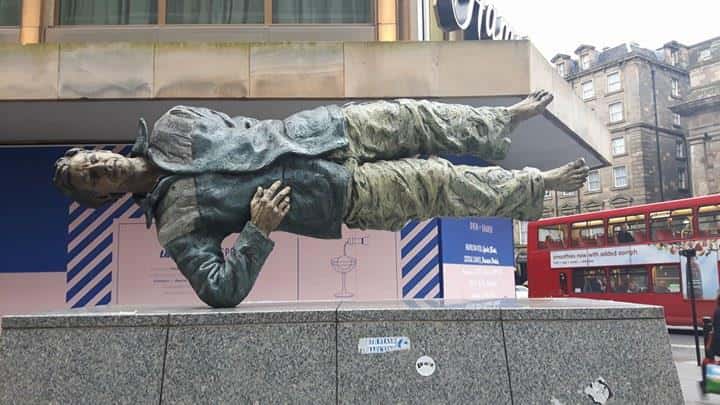
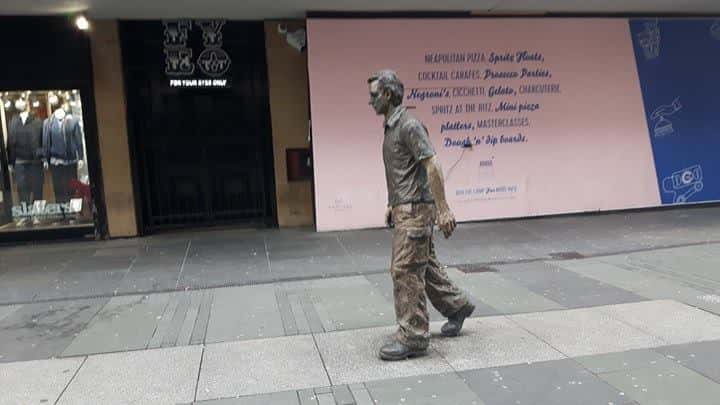
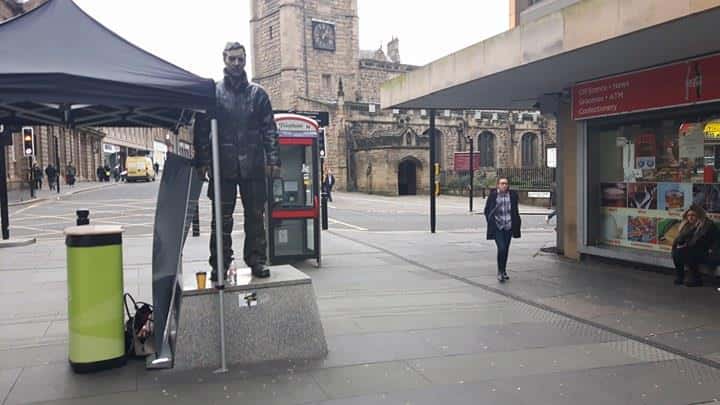
George Stevenson Memorial, Neville Road junction
Unveiled in 1862, the statue commemorates the famous George Stevenson, who stands atop it.
Beneath his feet are four figures which are meant to portray four of the many aspects of the man’s life and career.
A platelayer holding a piece of rail and an engineer resting on a model engine demonstrate the great strides George Stevenson made in the railway industry, including his invention of the ground-breaking ‘Rocket’ steam engine.
The other two figures consist of a muscular blacksmith and a miner with a safety lamp (also invented by George Stevenson). Gareth Neill, a project manager at NE1 stated that his personal favourite monument would be Stevenson’s monument: “I just think there’s so much history that goes with it that’s really important and I think we should be thinking about more and promoting more”.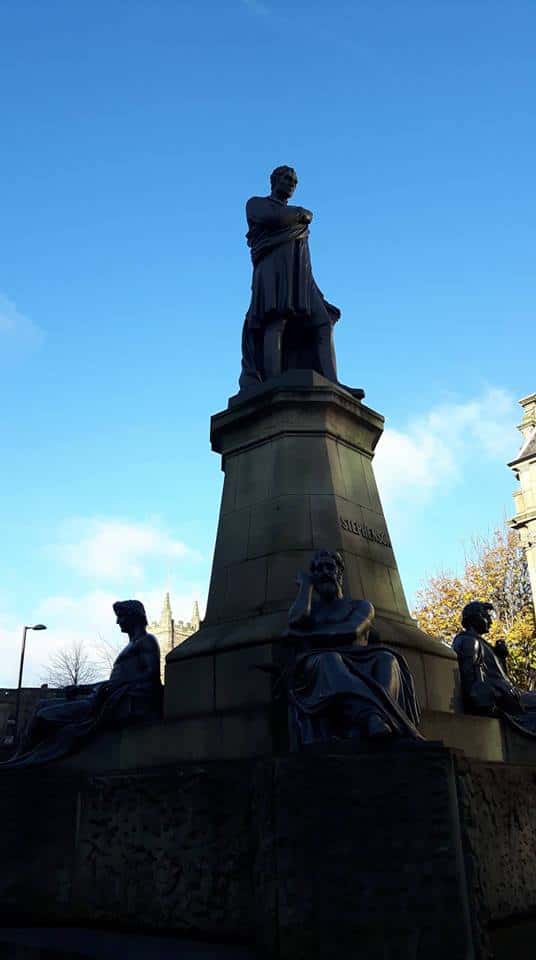
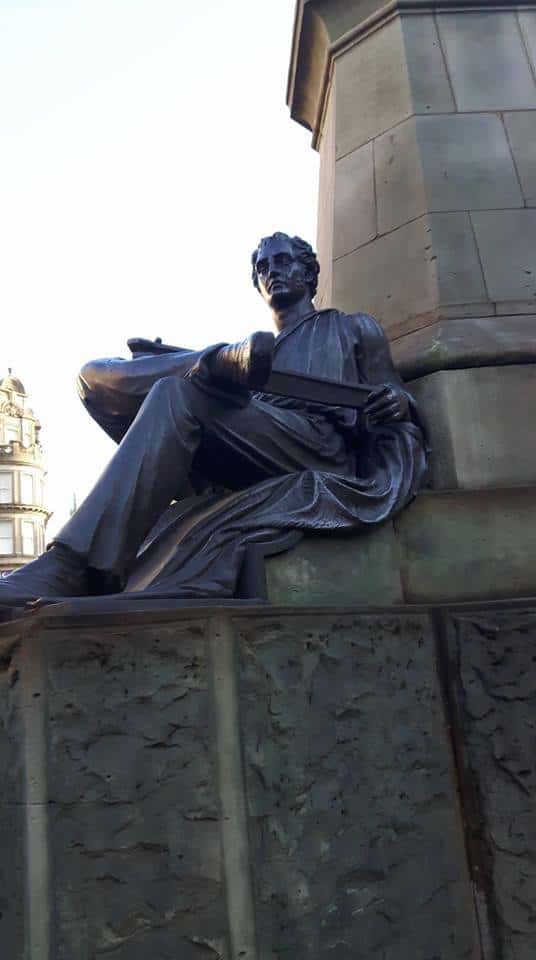
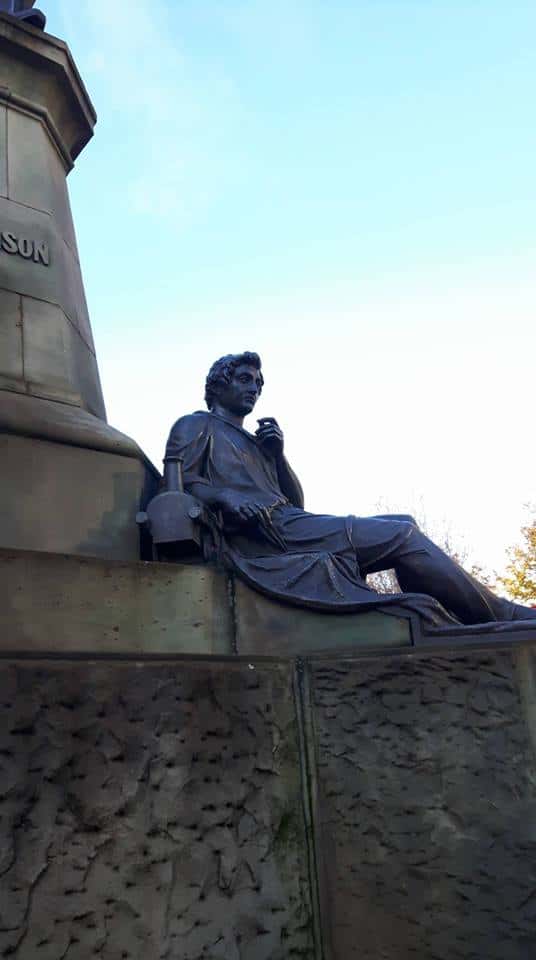
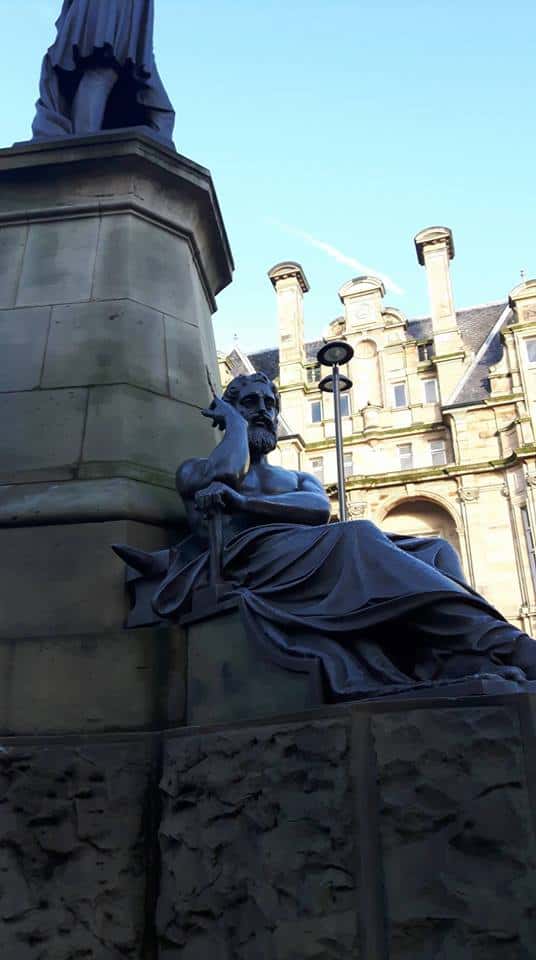
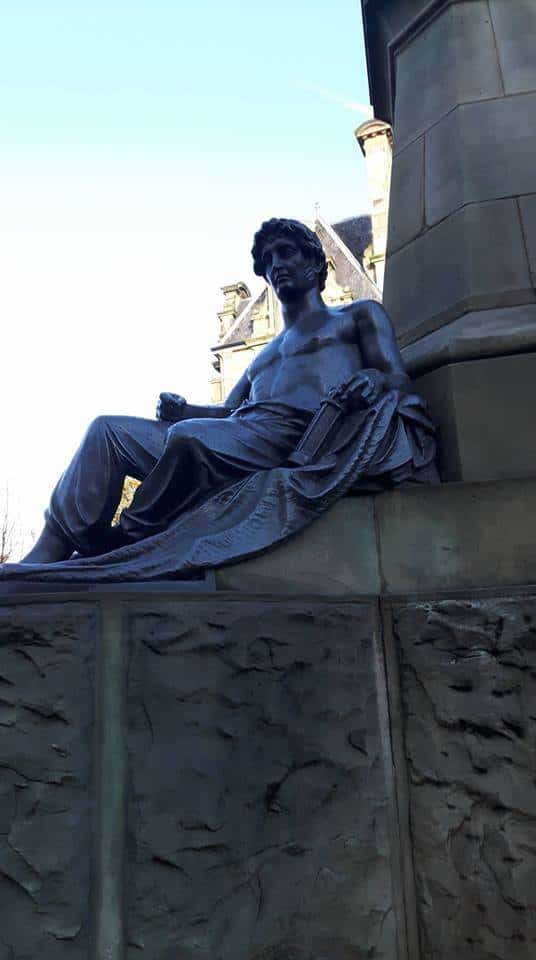
For walking tours of the city talk to Alex Iles at Alex@Ilestours.co.uk and for all other things Newcastle and Gateshead call NE1 on 0191 235 7096.

